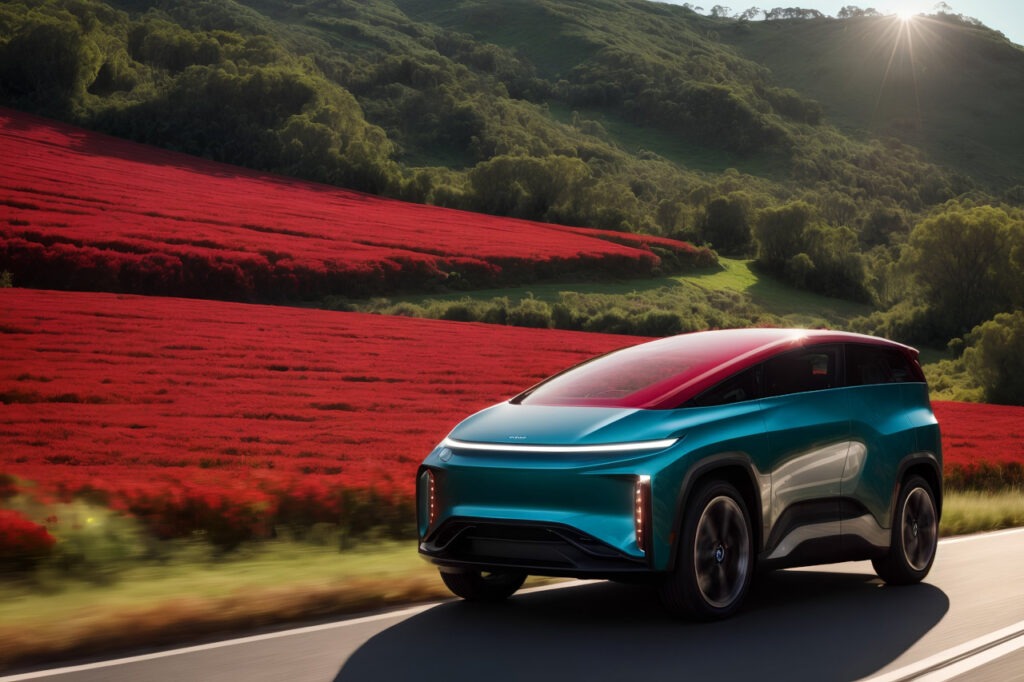Dieser Beitrag ist auch verfügbar auf:
Deutsch
Exponential growth of electric cars
2022 marked a milestone in the history of electric mobility: for the first time, more than 10 million electric cars were in use worldwide. This represents an increase of more than 55% over the previous year and shows that the acceptance of electric vehicles is growing faster than even the most optimistic forecasts predicted.
Boosted by government support programs, the expansion of charging infrastructure and plummeting battery costs, the market for electric cars has taken off around the world. In countries such as Norway and Iceland, where electric mobility is strongly subsidized, the share of electric cars in new registrations will already exceed 70% by 2023 according to Statista.
Current trends in electric vehicles: EVs are more than just cars
While electric cars remain at the heart of this movement, the spectrum of electric vehicles is expanding at an impressive pace. Electrification is now reaching other modes of transport, revolutionizing the entire mobility sector.
E-planes and e-ships
E-planes could fundamentally change regional air traffic in the near future and significantly reduce CO₂ emissions in this area. Initial prototypes such as the “Spirit of Innovation” from Rolls-Royce have already completed impressive test flights. The Tecnam P-Volt from Rolls-Royce and the Italian aircraft manufacturer Tecnam is set to be used in Norway from 2026.
Maritime transport is also changing. Electric cargo ships and ferries are reducing emissions on the world’s major ocean routes. Norway, a global pioneer in e-mobility, is already using all-electric ferries for public transport. These vessels not only help reduce emissions, but also lower operating costs through reduced energy consumption and maintenance.
E-Bikes: a revolution on two wheels
While electric cars and planes often steal the limelight, the electrification of bikes has been a quiet but significant change, especially in Asia. Electric two-wheelers are on the rise, especially in cities such as Taipei and Ho Chi Minh City.
The growing popularity of electric bikes is being helped by innovations such as removable batteries, which make charging much easier. Companies such as Gogoro in Taiwan have set up battery swap stations where users can swap their empty batteries for fully charged ones in a matter of minutes.
Improved charging infrastructure as a boost for e-mobility
The development of an efficient charging infrastructure is one of the biggest challenges and the most important driver for the widespread introduction of electric vehicles. There has been rapid progress in recent years, with some completely new technologies emerging.
The world’s fastest charging stations: revolutionizing filling stations
The era of charging your car for hours and hours is also coming to an end. New ultra-fast chargers from companies such as Tesla (Supercharger V4) and IONITY are setting new standards. These devices can charge electric cars in less than 10 minutes for a range of 300 kilometers. These reduced charging times come very close to the expectations of motorists, who are used to being able to drive off after a few minutes at the gas station.
The basis for this charging performance is the combination of powerful DC charging stations and new generations of batteries that can cope with higher charging speeds. In addition to saving time, the choice of location also plays an important role: many of these fast chargers are installed at busy highway rest stops or inner-city intersections to avoid long charging breaks during the journey.
Charging on the move: an Innovation from Sweden
A new technology that sounds like science fiction is currently being tested in Sweden: wireless charging while driving. On a modified stretch of highway, electric vehicles can charge their batteries while driving.
The system is based on inductive charging technology, in which electricity is transmitted wirelessly between a coil embedded in the road and a receiver coil in the vehicle. The advantage is obvious: Motorists could theoretically drive continuously without ever having to stop to refuel.
China and Norway as role models in terms of charging networks
China is expanding its charging infrastructure at an impressive pace and now uses over 5 million charging points. This means it operates the largest charging network in the world. The integration of the charging infrastructure into urban life is particularly noteworthy: in many large cities there are charging stations in residential complexes, shopping centers and office buildings, so that the majority of charging can be carried out conveniently during everyday activities.
In Europe, Norway has established itself as a pioneer. With over 90% of newly registered electric vehicles, the country is not only a leader in vehicle use, but has also built up a comprehensive network of public and private charging points.
In remote regions such as the Norwegian fjords, there are fast chargers at ferry docks and hiking parking lots, so that travel to remote areas is also possible. In addition, the electricity is generated almost entirely from renewable energies, which optimizes the CO₂ balance of the charging processes.
Environmental impact: Advances in battery manufacturing
Major advances in battery recycling
A common criticism of electric vehicles is the environmental impact of their batteries, which require raw materials such as lithium, nickel and cobalt. But the industry is working hard to reduce its carbon footprint. Companies such as Redwood Materials in the US and Li-Cycle in Canada have made great strides in battery recycling. With a recycling rate of over 95% for these raw materials, the need for new mining has been drastically reduced.
This recycling not only conserves resources, but also reduces dependence on geopolitically sensitive regions where these raw materials are often mined. This is an important step towards a more sustainable value chain.
Second-life batteries: from the vehicle to the grid
Batteries that no longer work efficiently enough in electric vehicles are no longer electronic waste. Instead, they are reused in second-life applications, such as stationary energy storage for homes or the power grid. These storage solutions help compensate for the intermittent nature of renewable energy and make use of surplus energy, such as solar or wind power.
This dual use significantly extends the life cycle of batteries, which has both environmental and economic benefits. Second-life batteries could play a key role in the energy transition by contributing to grid stability and security of supply.
The economic advantages of electric mobility
Electric vehicles sport lower operating costs
Electric vehicles are on average 40 percent cheaper to run than combustion engines. Electricity is cheaper than gasoline or diesel, and maintenance costs are significantly lower. Electric cars do not require oil changes or complex exhaust gas purification, and the regenerative braking power significantly reduces wear on brake pads.
For consumers, this means long-term cost savings, especially in times of rising energy prices and high living costs.
Electric vehicles as job creators of the future
E-mobility will create jobs on an impressive scale. According to a study by the English economic consulting agency Cambridge Econometrics, 1.1 million new jobs could be created in the sector in Europe alone by 2030. These include jobs in battery production, vehicle construction, the development of charging infrastructure and in the field of renewable energies.
This development is not only a benefit for the environment, but also an important contribution to economic stability and technological progress. Countries that invest early in e-mobility secure a strategic advantage in the global market.
Vehicle-to-Grid (V2G) enables the stabilization of power grids
A particularly exciting future scenario is the use of electric vehicles as mobile energy storage devices. With so-called vehicle-to-grid technology (V2G), electric cars could feed energy from their batteries back into the power grid to compensate for bottlenecks.
During peak load times, millions of electric cars in a network could help stabilize the power grid and reduce the need for expensive and environmentally harmful peak load power plants. At the same time, owners of electric vehicles could benefit financially by selling excess energy at peak prices.
The ION Power Grid has the potential to play a key role in the further development and implementation of V2G technologies. The Salzburg-based company is working on innovative solutions to optimize bidirectional charging infrastructure and energy management systems that are necessary for efficient and reliable feeding of energy back into the grid.
These systems enable precise control of energy quantities, ensuring that EV owners can both contribute to grid stability and benefit from the financial advantages of trading excess electricity using blockchain technology.
What we can expect by 2050
- The EU aims to reduce emissions from transport by 90% by 2050 compared to 1990 levels. Electric vehicles will play a key role, supported by a complete decarbonization of electricity generation.
- Integrating renewable energy: Electric vehicles could soon be automatically charged with excess solar and wind power, making them an integral part of the energy system.
- An electric car for every need: From ultra-compact city cars to luxury sedans and electric motorhomes – the variety will increase, making e-mobility accessible to all segments of the population.
- E-mobility is now a global movement that will have a lasting impact on transportation, the economy and our environment. The journey is far from over – the most exciting chapters are yet to come.






